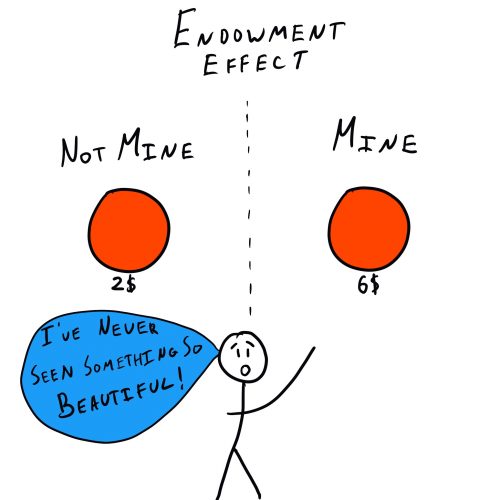Table of Contents
In the ever-evolving landscape of marketing, understanding consumer behavior and decision-making processes is paramount to success. Traditional economic models often assume that individuals make rational choices based on utility maximization. However, in reality, human behavior is influenced by a myriad of biases and heuristics. Enter behavioral economics—a discipline that examines how psychological factors affect economic decisions. In this article, we explore the intersection of behavioral economics and marketing and how a deep understanding of consumer biases can reshape marketing strategies.
In the dynamic world of marketing, the ability to decipher the enigma of consumer behavior is nothing short of a superpower. While traditional economic models have long provided a foundation for understanding decision-making, they often fall short in capturing the nuances of human psychology.
The crux of the matter lies in the assumption of rationality that underpins classical economics. While it’s a neat and tidy concept, it often falters in the face of the human psyche, which is prone to quirks, biases, and shortcuts. Enter behavioral economics, a field that peels back the layers of rationality and delves into the realm of heuristics, emotions, and cognitive biases.
The implications for marketing are profound. Understanding how these psychological factors influence consumer choices can be a game-changer. It means recognizing that consumers don’t always act in their economic self-interest. They may make decisions based on emotions, social pressures, or the desire for immediate gratification.
For marketers, this knowledge opens up a treasure trove of opportunities. By aligning strategies with behavioral insights, businesses can craft campaigns that resonate on a deeper level with their audience. They can use framing techniques to nudge consumers toward certain choices, leverage the power of social proof, and design user experiences that account for cognitive biases.
In essence, behavioral economics and marketing converge to form a potent synergy. It’s a discipline that acknowledges the beautifully messy complexity of human decision-making. By embracing this understanding, businesses can not only shape more effective marketing strategies but also foster stronger connections with their audience. It’s a journey that leads to a deeper appreciation of consumer behavior and a more successful path in the ever-evolving landscape of marketing.
Should you desire more in-depth information, it’s available for your perusal on this page: Household energy use: Applying behavioural economics to …
The Foundations of Behavioral Economics
Behavioral economics challenges the conventional economic notion of the “rational consumer.” It recognizes that people often deviate from purely rational decision-making due to cognitive limitations, emotional influences, and social factors. Two key pillars of behavioral economics that marketers should be aware of are:
nullAdditionally, you can find further information on this topic by visiting this page: Behavioral Finance: Biases, Emotions and Financial Behavior
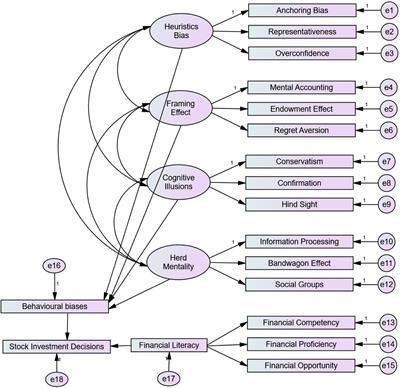
Understanding Consumer Biases
To create effective marketing campaigns, it’s crucial to comprehend the biases and heuristics that influence consumer choices. For example, marketers can leverage the anchoring heuristic by presenting a high-priced item first, making subsequent options seem like better deals. Similarly, recognizing the power of social proof (a bias) can lead to strategies that highlight positive reviews and testimonials to build trust.
“To create truly effective marketing campaigns, it’s crucial not only to understand consumer behaviors but also to comprehend the biases and heuristics that significantly influence their choices. These psychological shortcuts often drive decision-making more than we consciously realize.
Take the anchoring heuristic, for instance. This cognitive bias suggests that people tend to rely heavily on the first piece of information they encounter when making decisions. In the context of marketing, savvy marketers can strategically use this bias to their advantage. By presenting a high-priced item or option first, they set a reference point that anchors the consumer’s perception of value. Subsequent options, even if slightly less expensive, appear as better deals in comparison. This psychological tactic can be a powerful tool in pricing strategies and product positioning, effectively influencing purchasing decisions.
Another potent cognitive bias in the marketer’s toolkit is social proof. Humans have a tendency to follow the crowd and seek validation from others when making decisions. Recognizing the power of social proof can lead to marketing strategies that capitalize on this inherent bias. For example, featuring customer reviews and testimonials prominently in advertising or on product pages can build trust and reassure potential buyers. When consumers see that others have had positive experiences with a product or service, they are more likely to feel confident in their decision to purchase.
Moreover, understanding the availability heuristic, which involves people relying on readily available information when making judgments, can guide marketing efforts. Marketers can ensure that key product benefits or features are easily accessible and visible to consumers, making them more likely to be factored into purchasing decisions.
By delving into the intricate landscape of cognitive biases and heuristics, marketers gain insights into the subconscious drivers of consumer behavior. Armed with this knowledge, they can craft campaigns that not only appeal to consumers’ rational considerations but also tap into the underlying psychological factors that influence decision-making. It’s this holistic approach that separates truly effective marketing campaigns from the rest, creating lasting connections with consumers and driving success in a competitive marketplace.”
For additional details, consider exploring the related content available here What Is Behavioral Economics? Theories, Goals, and Applications
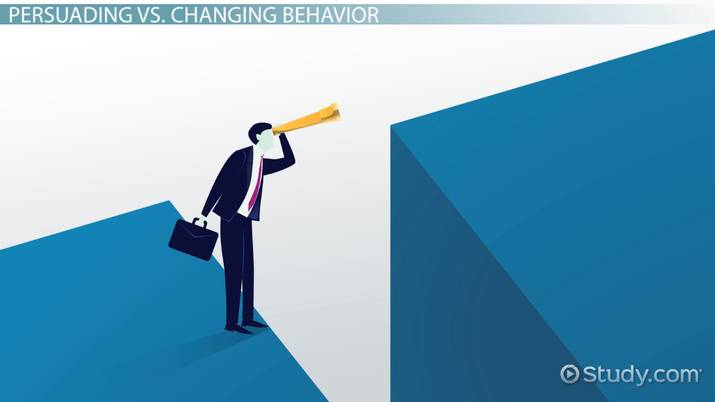
Nudging and Choice Architecture
Behavioral economics introduces the concept of “nudging,” which involves designing choices to guide people toward decisions that are in their best interest. Marketers can employ nudges to encourage specific behaviors. For instance, an online retailer can use a default option of subscribing to a newsletter, nudging customers to opt-in unless they actively opt-out.
The concept of “nudging” in behavioral economics is a fascinating and powerful tool for marketers that goes beyond the obvious default options. Here are some additional insights into how nudging can be applied effectively:
Choice Architecture: Nudging is essentially about shaping the environment in which decisions are made. Marketers can design the layout of websites, mobile apps, or physical stores to influence consumer choices. For instance, placing healthy snacks at eye level in a store nudges shoppers toward healthier options.
Positive Framing: Nudging can involve framing choices in a positive light. Instead of emphasizing what consumers might lose, marketers can highlight the benefits of a particular decision. For instance, framing a subscription as “Gain access to exclusive content” rather than “Avoid missing out” can be more persuasive.
Social Norms: Leveraging social norms is another powerful form of nudging. By showing what the majority of people are doing, marketers can encourage conformity. Phrases like “Join the thousands who have already signed up” can tap into this aspect of human behavior.
Timing and Reminders: Nudging doesn’t always have to be about the initial choice. Marketers can use timely reminders to encourage actions. For example, sending an email reminder with a countdown for an expiring offer can nudge consumers to make a purchase.
Default Options: While default options are commonly used, marketers can take this concept further by offering choices that cater to different consumer preferences. For instance, a streaming service could provide default playlists based on a user’s previous listening habits, nudging them to start with content they’re likely to enjoy.
Sustainability and Social Responsibility: Nudging can also be employed to promote sustainable choices. For instance, a hotel can encourage guests to reuse towels by framing it as an environmentally responsible option, aligning with consumers’ growing concern for sustainability.
Personalization: Tailoring nudges to individual preferences and behavior history is increasingly feasible with data analytics. Marketers can use personalized recommendations and incentives to nudge consumers toward products or services that align with their interests.
A/B Testing: To fine-tune nudges, A/B testing can be invaluable. Marketers can experiment with different nudging strategies and measure their effectiveness to optimize decision architectures continually.
Transparency and Trust: It’s crucial to maintain transparency in nudging tactics. Marketers should ensure that consumers understand the choices presented to them and that these choices genuinely align with their best interests. Trust is essential for long-term customer relationships.
Continuous Learning: Behavioral economics and nudging are evolving fields. Marketers should stay updated on the latest research and insights to refine their strategies continually. What works today may not be as effective tomorrow, as consumer behaviors and preferences evolve.
Incorporating these nuanced approaches to nudging can significantly enhance the effectiveness of marketing campaigns. By aligning nudges with consumers’ interests, values, and behaviors, marketers can create a win-win situation where consumers make choices that benefit them while achieving business objectives.
To expand your knowledge on this subject, make sure to read on at this location: Choice Architecture – The Decision Lab
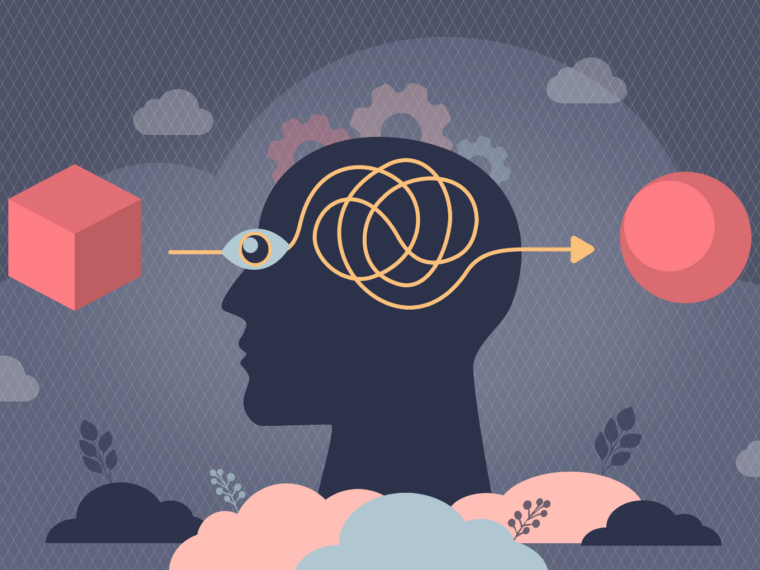
Pricing Strategies
Understanding consumer biases is particularly beneficial in pricing strategies. The decoy effect, where a third, less attractive option makes another option seem more appealing, can be employed effectively in pricing tiers. Marketers can strategically introduce a less attractive option to steer customers toward a more profitable choice.
“Understanding consumer biases is particularly beneficial in pricing strategies. The decoy effect, where a third, less attractive option makes another option seem more appealing, can be employed effectively in pricing tiers. Marketers can strategically introduce a less attractive option to steer customers toward a more profitable choice.
Moreover, the anchoring bias is another psychological phenomenon that plays a pivotal role in pricing decisions. By presenting a higher-priced item as the initial reference point, marketers can anchor customers’ expectations and make subsequent, slightly lower-priced options appear more reasonable, leading to increased sales of these mid-range products.
Additionally, the power of scarcity and urgency can’t be underestimated. Creating a sense of limited availability or a time-sensitive offer taps into consumers’ fear of missing out (FOMO). This can drive quick decision-making and spur impulse purchases, boosting revenue and conversion rates.
Furthermore, personalized pricing is gaining traction with advancements in data analytics. By tailoring prices based on individual consumer behaviors, preferences, and purchase histories, companies can optimize their pricing strategies to maximize profitability while ensuring customer satisfaction.
Incorporating these insights into pricing strategies isn’t about manipulating consumers but rather about aligning offerings with consumer psychology. When done ethically and transparently, it creates a win-win situation: customers perceive greater value, and businesses improve their bottom line. Understanding consumer biases is a powerful tool in the marketer’s arsenal, and mastering it can be a game-changer in the competitive world of pricing and sales.”
Should you desire more in-depth information, it’s available for your perusal on this page: Occasional Paper No.1 – Applying behavioural economics at the …
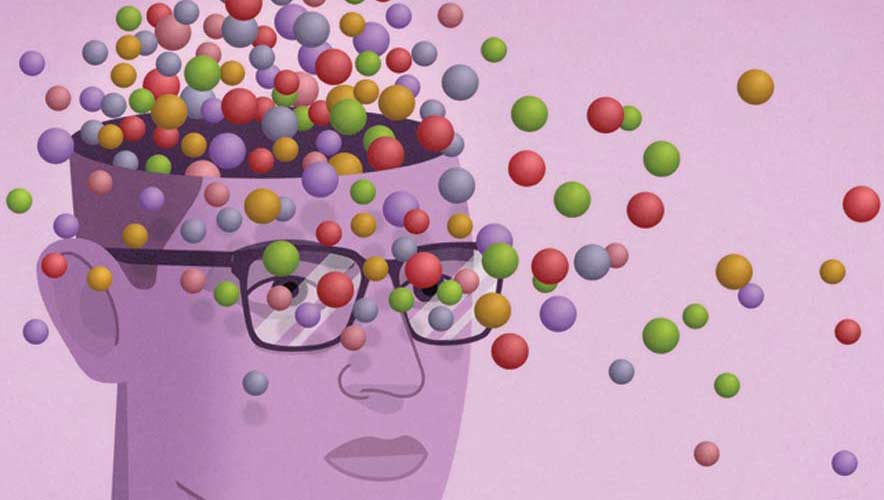
Loss Aversion and Risk Perception
Behavioral economics also sheds light on how consumers perceive losses and risks. Loss aversion—the tendency to prefer avoiding losses over acquiring equivalent gains—can be addressed by emphasizing the potential loss of not using a product or service. Likewise, addressing consumers’ risk perceptions through transparent communication can enhance trust and encourage conversions.
nullTo expand your knowledge on this subject, make sure to read on at this location: Loss aversion – The Decision Lab
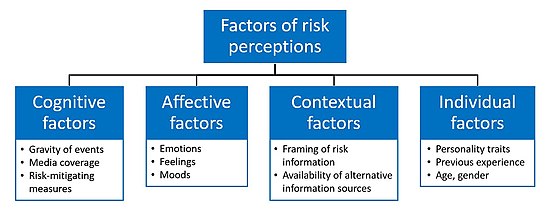
Emotional Appeal
Marketing campaigns that tap into consumers’ emotions often resonate more deeply. Behavioral economics acknowledges the emotional component of decision-making and underscores the importance of emotional appeal in branding and messaging.
Marketing campaigns that tap into consumers’ emotions often resonate more deeply, creating lasting impressions and fostering stronger brand loyalty. In today’s competitive marketplace, where consumers are bombarded with information and choices, emotional connections can make all the difference.
Behavioral economics, a field that combines insights from psychology and economics, acknowledges the emotional component of decision-making. It underscores the importance of emotional appeal in branding and messaging, recognizing that rationality alone doesn’t drive consumer choices.
One key concept in behavioral economics is the idea that consumers are not purely rational decision-makers. They are influenced by cognitive biases, emotions, and heuristics (mental shortcuts) when making choices. This means that emotional factors, such as trust, nostalgia, or a sense of belonging, can significantly impact consumer behavior.
Emotional marketing taps into these psychological drivers by crafting campaigns that resonate on a personal level. It seeks to create emotional connections between the brand and the consumer, making the brand a part of the consumer’s story and identity. This emotional bond often results in increased brand loyalty, repeat purchases, and positive word-of-mouth recommendations.
Furthermore, emotional marketing can differentiate a brand in a crowded marketplace. When consumers feel a genuine emotional connection with a brand, they are more likely to choose it over competitors offering similar products or services. This is especially relevant in industries where products have become commoditized, and emotional appeal becomes a key differentiator.
Moreover, emotional marketing is memorable. Consumers are more likely to remember and share advertisements that evoke strong emotions, whether it’s laughter, nostalgia, empathy, or excitement. These shared experiences amplify a brand’s reach and impact, often at a lower cost per impression compared to purely rational messaging.
In essence, behavioral economics reminds us that humans are emotional beings, and these emotions play a vital role in decision-making. By incorporating emotional appeal into their marketing strategies, businesses can forge deeper connections with consumers, stand out in a crowded marketplace, and create memorable brand experiences that drive long-term success. It’s a reminder that in the world of marketing, it’s not just about what you sell but how you make people feel that truly matters.
To delve further into this matter, we encourage you to check out the additional resources provided here: Household energy use: Applying behavioural economics to …

Ethical Considerations and Responsibility
While behavioral economics offers powerful tools for marketers, ethical considerations are paramount. It’s essential to use these insights responsibly, ensuring that nudges and persuasive techniques are employed to benefit consumers rather than manipulate them.
Behavioral economics has become an invaluable resource for marketers, providing a deeper understanding of consumer behavior and decision-making processes. However, its application comes with significant ethical responsibilities. Extending upon the importance of ethical considerations in the realm of behavioral economics and marketing:
Informed Consent: It is crucial to respect the autonomy of consumers. Any behavioral intervention, nudge, or persuasive technique should be implemented with the informed consent of individuals. Transparency about the methods being used and their intended outcomes ensures that consumers are not unwittingly manipulated.
Beneficence Over Manipulation: Marketers should prioritize beneficence, aiming to genuinely benefit consumers rather than merely manipulating their choices. Ethical marketers recognize that their long-term success depends on building trust with customers, and this trust is undermined if consumers feel they are being coerced or deceived.
Respect for Vulnerable Populations: Behavioral economics insights can be particularly influential on vulnerable populations, such as children, the elderly, or individuals with limited cognitive capacity. Marketers must exercise caution when targeting these groups and avoid exploiting their vulnerabilities.
Avoiding Exploitative Practices: While nudging can be a force for positive change, it can also be used in ways that exploit consumer biases. Marketers should refrain from exploiting cognitive biases to drive sales of products that are harmful or unnecessary for consumers.
Honesty in Messaging: Behavioral insights should never be used to create deceptive advertising or misleading messaging. Marketing materials should accurately represent products or services to prevent consumer disappointment and disillusionment.
Long-Term Customer Value: Ethical marketers focus on building long-term relationships with customers rather than seeking quick profits through manipulative techniques. This approach recognizes that sustainable success is achieved by delivering real value to consumers.
Monitoring and Self-Regulation: Marketers should actively monitor their strategies and campaigns to ensure they align with ethical principles. Industry self-regulation and adherence to ethical codes of conduct can be effective ways to promote responsible use of behavioral economics.
Consumer Education: An ethical approach involves educating consumers about the behavioral techniques being employed. This empowers consumers to make more informed choices and reduces the risk of unintended manipulation.
Social Responsibility: Beyond individual ethical considerations, marketers should also consider the broader social impact of their strategies. They should ask themselves how their actions contribute to the well-being of society as a whole and whether they align with societal values and norms.
Ethical Leadership: Ethical considerations should start at the top of an organization. Leaders should set a strong ethical tone, emphasizing the importance of responsible marketing practices and holding their teams accountable for ethical behavior.
In summary, while behavioral economics offers marketers powerful tools to understand and influence consumer behavior, these tools must be wielded with the utmost ethical responsibility. By prioritizing consumer well-being, transparency, and long-term trust, marketers can harness the insights of behavioral economics to create more ethical and sustainable marketing strategies that benefit both businesses and consumers alike.
Explore this link for a more extensive examination of the topic: What Is Behavioral Economics? Theories, Goals, and Applications

In conclusion, the marriage of behavioral economics and marketing offers a profound understanding of consumer behavior, allowing marketers to craft more effective and ethical strategies. Recognizing and leveraging biases and heuristics can lead to campaigns that resonate with consumers, ultimately driving engagement and loyalty. By acknowledging the complexity of human decision-making, marketers can enhance their ability to create meaningful connections with their audience and navigate the ever-changing landscape of consumer preferences.
“In conclusion, the marriage of behavioral economics and marketing offers a profound understanding of consumer behavior, allowing marketers to craft more effective and ethical strategies. Recognizing and leveraging biases and heuristics can lead to campaigns that resonate with consumers, ultimately driving engagement and loyalty.
The power of this approach lies in its ability to tap into the innate tendencies and cognitive shortcuts that influence our decisions. By acknowledging that consumers often rely on mental shortcuts and are prone to certain biases, marketers can design campaigns that align with these natural inclinations.
For example, understanding the anchoring effect can help marketers set initial prices or discounts strategically to influence perceived value. Recognizing the power of social proof can guide the incorporation of user reviews and testimonials to build trust and credibility. These are just a couple of ways in which behavioral economics insights can be applied to marketing.
Moreover, this approach promotes ethical marketing practices. Instead of exploiting cognitive biases for short-term gains, marketers can use their knowledge to create transparent and genuinely valuable experiences for consumers. Building trust and fostering authentic connections become central tenets of their strategies.
By acknowledging the complexity of human decision-making, marketers can enhance their ability to create meaningful connections with their audience and navigate the ever-changing landscape of consumer preferences. They become not just advertisers but partners in the consumer’s journey, offering solutions that genuinely address their needs and desires.
In an era where consumers are increasingly discerning and value-conscious, the insights gained from behavioral economics provide a competitive advantage. They empower marketers to move beyond surface-level persuasion to create lasting relationships with their audience. As technology and consumer behavior continue to evolve, this marriage of psychology and marketing remains a potent tool for those who seek to excel in the art and science of consumer engagement.”
Should you desire more in-depth information, it’s available for your perusal on this page: Algorithmic bias detection and mitigation: Best practices and policies …
More links
Should you desire more in-depth information, it’s available for your perusal on this page: What Is Behavioral Economics? Theories, Goals, and Applications
